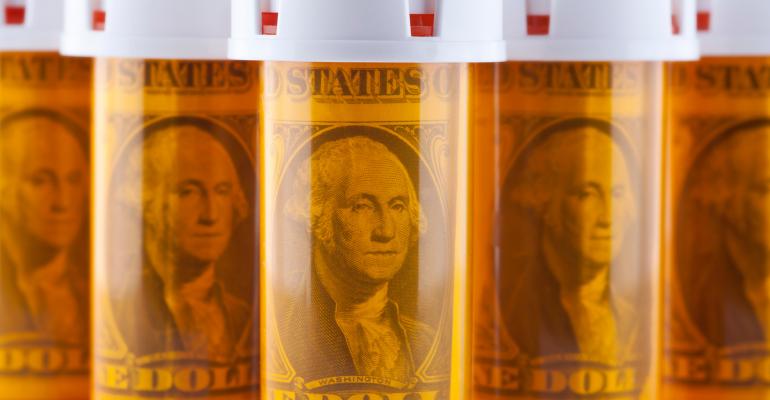What are corporate retirement plan sponsors excited about these days? The cost of healthcare, and ways to save money to pay for it—that is, if their annual get-together in Tampa, Fla. is any indication.
Health Savings Accounts (HSAs) were a star attraction at last week’s annual Plan Sponsor Council of America conference. And we might be reaching Peak HSA, if some of the sessions are any indication. One HSA session was headlined “America’s Ultimate Retirement Savings Tool,” while another claimed that the accounts are a “Retirement Superhero in Disguise.”
In one sense, the hype is justified. The tax benefits of HSAs are unmatched—pre-tax contributions and earnings on interest or investments, as well as withdrawals when used for qualified medical expenses, are tax free. And the market has been growing at a fast clip: The most recent annual statistics from Devenir, a firm that creates investment solutions for HSAs and tracks market data, show that the number of HSA accounts rose 13% last year, surpassing 25 million. Assets held in HSAs totaled $53.8 billion, up 19%.
But are HSAs really the ultimate saving tool for retirement? Not just yet. At $53.8 billion in assets, HSA assets are a tiny fraction of the overall retirement marketplace. At year-end 2018, $8.2 trillion was held in mutual funds held in defined contribution plans and IRAs, according to the Investment Company Institute—and the overall U.S. retirement market was $27 trillion.
And just 23% of HSA assets are invested, according to Devenir. Most of the investing is being done at small firms with highly-paid professional employees who can afford to max out their HSAs and use other funds to meet their out-of-pocket health expenditures, according to some industry players at the conference.
HSA contributions can be made only by people enrolled in high-deductible health insurance plans. Twenty-two percent of employers offered an HSA-qualified high-deductible insurance plan in 2018, according to the Kaiser Family Foundation, up sharply from 10% in 2008. But over the past five years, that figure has been bouncing around in a range—as high as 24 percent, and as low as 17 percent.
Some experts concede growth is slowing. A recent Employee Benefit Research Institute (EBRI) review of growth rates in HSA-eligible health plans notes a Mercer report that the 19% growth clip from 2013 to 2016 slowed to just 7% in 2017 and 2018.
EBRI and others think the slowdown is due to several factors: to the delay in implementation of the Cadillac tax on high-value insurance plans, moderating insurance premium increases and a tight labor market that is prompting employers to sweeten job offers with better insurance coverage.
“I believe the lower adoption is like any product cycle whereas you have your early adopters that drove much of the past growth,” says Craig Keohan, chief revenue officer of HealthSavings Administrators, an investment-focused HSA provider who attended the conference. “One of the largest reasons for slower growth is price - health plans continue to narrow the price difference between a lower deductible health plan and a high deductible health plan.”
Another potential headwind for HSA growth is complexity in the workplace retirement environment. Many of the conference participants I spoke with worry about the lack of financial literacy among plan participants—yet HSAs are yet another employee benefit element that require coordination and education.
The Empower Institute (part of Empower Retirement) presented a savings optimization model at the conference that can help employees increase purchasing power in retirement by making optimal decisions about how much of their savings to put into different types of accounts over the course of their careers.
The model considers different 401K matching rates; its general recommendation is that workers should allocate all contributions to their retirement plans up to the match formula threshold, then allocate additional dollars to the HSA up to the maximum level permitted. Any additional savings dollars should be allocated to the retirement plan up to the annual contribution limit.
That probably makes sense—but it’s just one more navigational challenge for plan sponsors and participants.
If adoption of high-deductible health plans continues to stall, it could pose growth challenges for the HSA industry, which has been working to convince Congress to liberalize regulations. The House of Representatives passed a bill last summer that would broaden the list of products and services that could be purchased using HSAs.
Another proposal would allow Medicare enrollees to continue to contribute to HSAs. That would simplify a complication that arises for working people approaching retirement and Medicare enrollment.
Medicare does not meet the definition of a high-deductible health plan; contributions must stop at the point of enrollment, although withdrawals can continue. The timing can be complicated, since Medicare Part A coverage is retroactive for six months for enrollees who qualify during those months. For those enrollees, HSA. contributions must stop six months before their Medicare effective date in order to avoid tax penalties.





